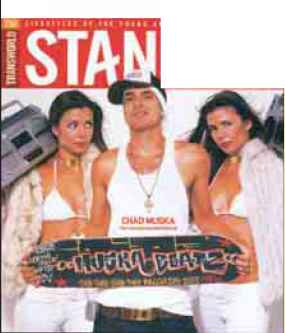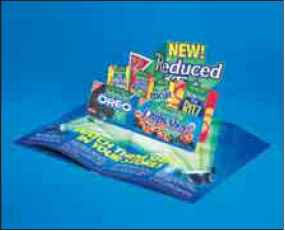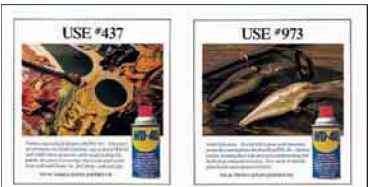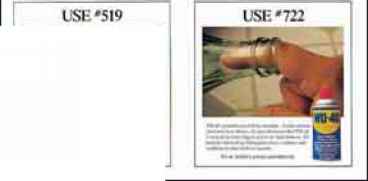Info Yjb
CAN A PRO SKATER SAVE HIP-HOP?

J(&ftN REDEFINES PLATING LJVÉ" THE CHOC HUH [ E-R'5 LAST WQHD Mi wHOKwirwA PI :H u
CfRLS. PILLOWS PJLLDWFlOHri" l'ij
Stance, which debuted in early 2000.The new publication takes its cover-shot and content cues from adult magazines such as Gear, Maxim, Stuff, and FHM. Stance's publisher says that the magazine is a combination of the things teenage boys want to look at: girls, action sports, video games, cars, and music. Stance steers clear of grooming articles and girl-getting pointers, focusing more on cool stuff to buy such as computers and video game players and exotic things to do such as snowboarding in Austria. The magazine has been very successful in attracting readers as well as a variety of advertisers.
Marketers will be keeping a close watch on Stance and other new magazines that target the elusive teen male market. Advertisers would love to see magazines that can attract teenage boys succeed so that they can better target this important market segment. Publishers have already proved that they can attract teenage girls. Now if they can only get the guys to pick up a magazine!
Sources: Jon Fine, "Rodale Names Steve Murphy New CEO," Advertising Age, Jan. 14,2002, p. 7; Larry Dobrow,"Sounding Boards," Advertising Age, June 25,2001, pp. Si, 8; Erin White,"Teen Mags for Guys Not Dolls," The Wall Street Journal, Aug. 10, 2000, pp.Bi, 4.
Exhibit 12-6 Geographic editions of Newsweek magazine

offers regional editions for each, as shown in Exhibit 12-6. Newsweek also offers advertisers their choice of editions directed to the top 40, 20, or 10 metropolitan areas. Many magazines allow advertisers to combine regional or metropolitan editions to best match the geographic market of interest to them.
Standard Rate and Data Service lists over 350 consumer magazines offering geographic and/or demographic editions. Regional advertisers can purchase space in editions that reach only areas where they have distribution, yet still enjoy the prestige of advertising in a major national magazine. National advertisers can use the geographic editions to focus their advertising on areas with the greatest potential or those needing more promotional support. They can also use regional editions to test-market products or alternative promotional campaigns in various regions of the country.
Ads in regional editions can also list the names of retailers or distributors in various markets, thus encouraging greater local support from the trade. The trend toward regional marketing is increasing the importance of having regional media available to marketers. The availability of regional and demographic editions can also reduce the cost per thousand for reaching desired audiences.
Reproduction Quality One of the most valued attributes of magazine advertising is the reproduction quality of the ads. Magazines are generally printed on high-quality paper stock and use printing processes that provide excellent reproduction in black and white or color. Since magazines are a visual medium where illustrations are often a dominant part of an ad, this is a very important property. The reproduction quality of most magazines is far superior to that offered by the other major print medium of newspapers, particularly when color is needed. The use of color has become a virtual necessity in most product categories, and more than two-thirds of all magazine ads now use color.
Creative Flexibility In addition to their excellent reproduction capabilities, magazines also offer advertisers a great deal of flexibility in terms of the type, size, and placement of the advertising material. Some magazines offer (often at extra charge) a variety of special options that can enhance the creative appeal of the ad and increase attention and readership. Examples include gatefolds, bleed pages, inserts, and creative space buys.
Gatefolds enable an advertiser to make a striking presentation by using a third page that folds out and gives the ad an extra-large spread. Gatefolds are often found at the inside cover of large consumer magazines or on some inside pages. Advertisers use gate-folds to make a very strong impression, especially on special occasions such as the introduction of a new product or brand. For example, automobile advertisers often use gatefolds to introduce new versions of their cars each model year. Not all magazines offer gatefolds, however, and they must be reserved well in advance and are sold at a premium.
Bleed pages are those where the advertisement extends all the way to the end of the page, with no margin of white space around the ad. Bleeds give the ad an impression of being larger and make a more dramatic impact. Many magazines charge an extra 10 to 20 percent for bleeds.
In addition to gatefolds and bleed pages, creative options available through magazines include unusual page sizes and shapes. Some advertisers have grabbed readers' attention by developing three-dimensional pop-up ads that jump off the page. Exhibit 12-7 shows a pop-up ad that Nabisco used in several trade magazines to promote its Reduced Fat cracker and cookie products.
Various other inserts are used in many magazines. These include return cards, recipe booklets, coupons, records, and even product samples. Cosmetic companies use scratch-and-sniff inserts to introduce new fragrances, and some companies use them to promote deodorants, laundry detergents, or other products whose scent is important. Inserts are also used in conjunction with direct-response ads and as part of sales promotion strategies.
Scented ads, pop-ups, singing ads, and other techniques are ways to break through the clutter in magazines and capture consumers' attention. However, there recently has been some backlash against various types of printaculars. Critics argue that they alter the appearance and feel of a magazine and the reader's relationship to it. Advertisers do not want to run regular ads that have to compete against heavy inserts, pop-ups, talking ads, or other distractions. Some advertisers and agencies are even asking publishers to notify them when they plan to run any spectacular inserts so that they can decide whether to pull their regular ads from the issue.5
Creative space buys are another option of magazines. Some magazines let advertisers purchase space units in certain combinations to increase the impact of their media budget. For example, WD-40, an all-purpose lubrication product, uses half- or quarter-page ads on consecutive pages of several magazines, mentioning a different use for the product on each page, as shown in Exhibit 12-8. This strategy gives the company greater impact for its media dollars and is helpful in promoting the product's variety of uses.

Exhibit 12-7 Nabisco used a pop-up ad to get the attention of trade magazine readers

Exhibit 12-8 WD-40 uses quarter-page ads to get greater impact from its media budget

Exhibit 12-8 WD-40 uses quarter-page ads to get greater impact from its media budget

Continue reading here: Disadvantages of Magazines
Was this article helpful?